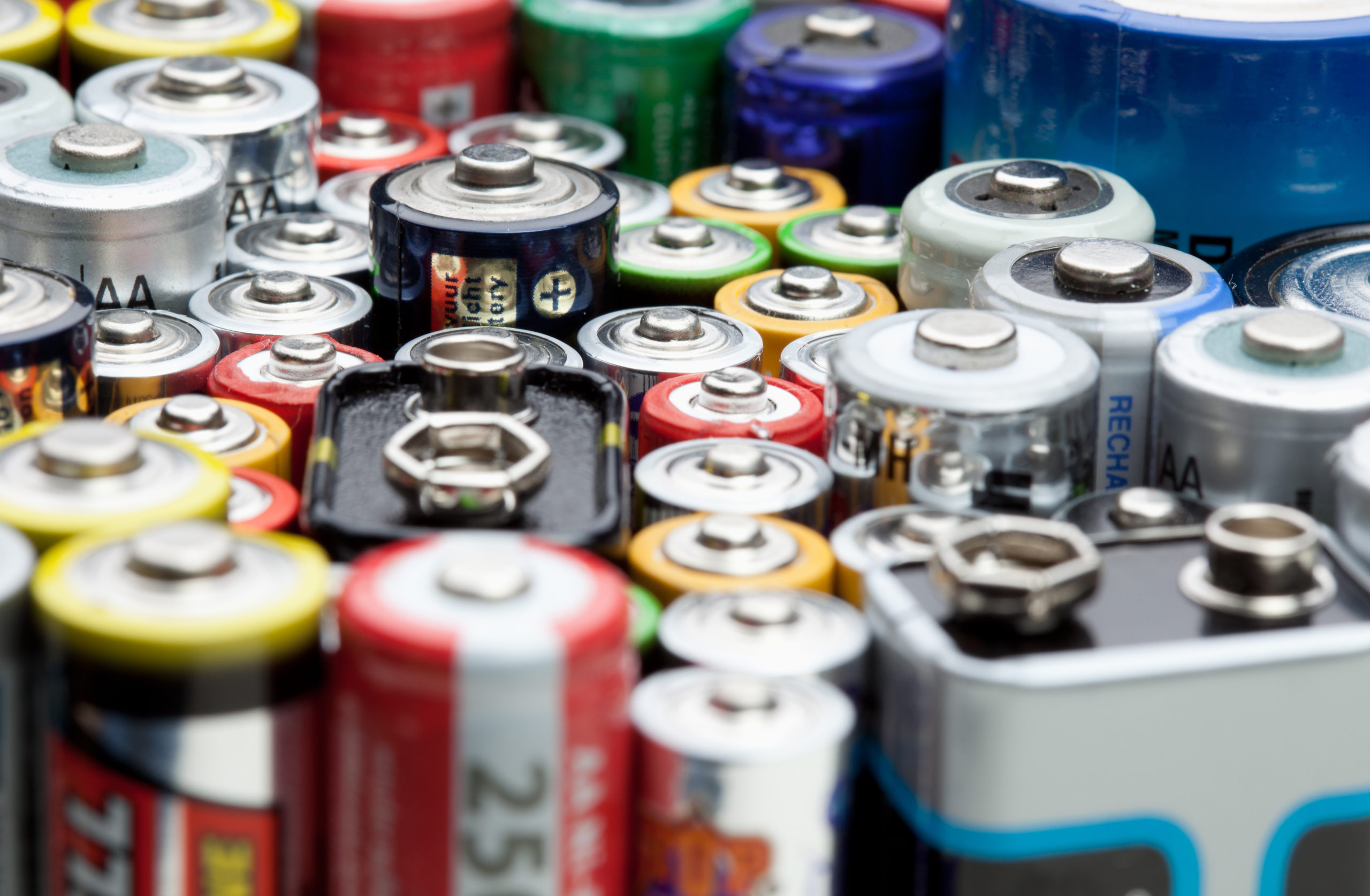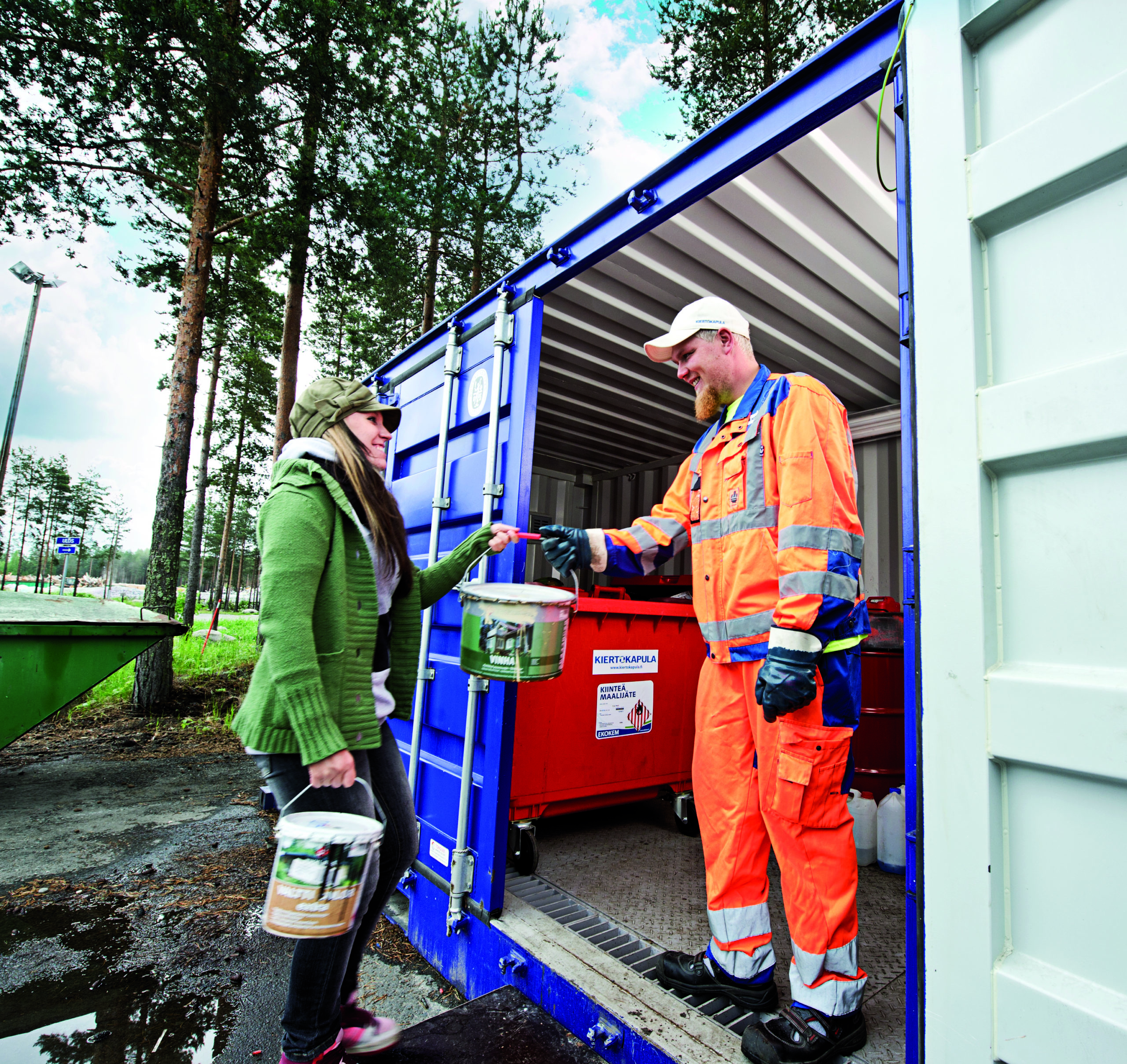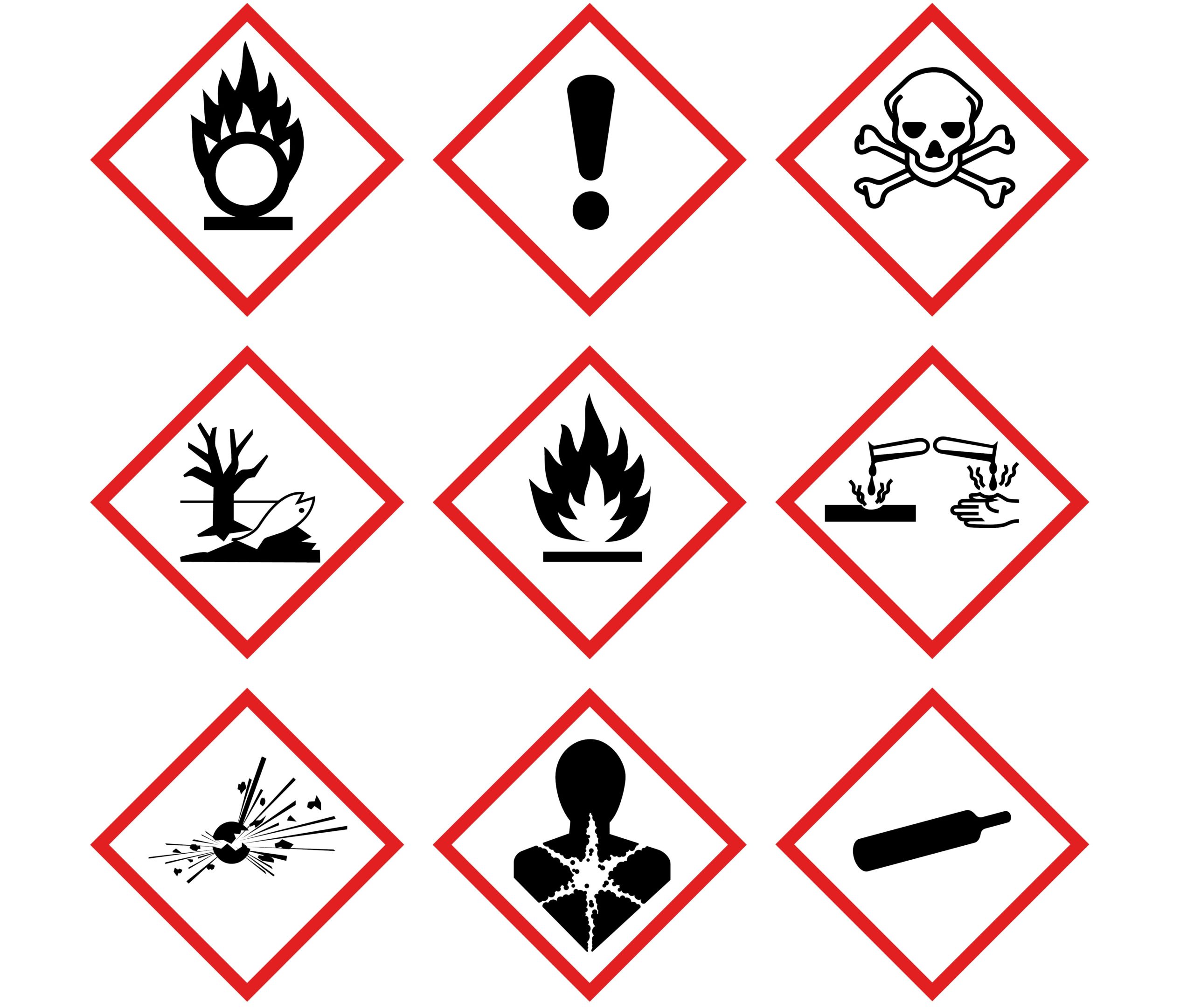Hazardous waste

Small actions matter.
Recycling hazardous waste is a choice for the environment
Hazardous waste is waste that can pose a particular threat to or harm people’s health or the environment. Hazardous waste must be delivered to a designated collection point. It does not belong in nature or among other waste. Hazardous waste must be stored separately from other waste, and hazardous waste items should not be mixed together.
Hazardous becomes useful when delivered to collection
Some hazardous waste can be recovered as recycled material. For example, more than 50% of the materials from batteries can be recovered as recycled raw materials, and good quality waste oils can be used as raw materials for new oil products. Some hazardous waste is recovered as energy at dedicated incineration plants. Hazardous waste that cannot be recovered as material or energy will be properly disposed of at a designated final disposal site.


How can you identify hazardous waste?
Danger lies in many familiar everyday things. The packaging of a substance classified as hazardous waste can often be identified by a red and white warning sign indicating the hazardous properties of the substance. Old packaging may still have the old black and orange sign.
Strong detergents often contain a sign for skin or eye irritation, while the sign on a hairspray bottle indicates that the substance is highly flammable. Warning signs can often also be found on paint or varnish cans, solvents and powdered mortars, which are all examples of hazardous waste.
Not all hazardous waste is labelled with warning signs, so identification requires reading up on the properties of the substance.
ACCEPTANCE FREE OF CHARGE
Almost all hazardous waste is accepted free of charge from households and farms. Exceptions to this include asbestos, fire extinguishers as well as closed and dirty barrels, which are subject to a charge in accordance with the price list. Hazardous waste that is subject to a charge is accepted only at waste treatment sites. Please note that Kiertokapula does not accept, for example, ammunition or explosives, which should be delivered to the police.
Acceptance of hazardous waste
Waste treatment sites and municipal depots
Kiertokapula accepts hazardous waste at the five waste treatment sites in its operating area. The municipal depots in our operating area in Hausjärvi, Loppi, Mäntsälä and Riihimäki also accept hazardous waste.
Annual collection drives
A large hazardous waste collection drive is organised annually in the municipalities of Kiertokapula’s operating area. In addition to hazardous waste, scrap metal is accepted for collection. Learn more about collection drives. Schedules can also be found in the distributed Tietokapula magazine.
Weekly collection tours
Kiertokapula organises weekly hazardous waste collections in its area, with only hazardous waste accepted. See the schedules for weekly collections.
Other collection points
Some hazardous waste items are easier to return, for example, to any place selling them, such as batteries to collection points in shops and medications to the nearest pharmacy.
Hazardous waste
Waste oil and oily waste
Waste oil is used lubricating oil. When released into the environment, oil causes harm to both bodies of water and soil. Oil delivered for proper treatment can be recycled as a raw material for lubricating oil or recovered as energy. Other oily waste, such as oil filters or cotton cleaning waste, must also be delivered to an appropriate reception location, just like waste oil.
Light bulbs
Some light bulbs are hazardous waste. They may contain mercury, which accumulates in the food chain. Light bulbs are most convenient to return to the collection points in shops. Incandescent light bulbs can be placed in mixed waste, while LEDs are waste electric and electronic equipment.
Medical waste, needles and syringes
Medications cause harm to animals and plants when released into a body of water or soil. It is easiest to return excess and expired medications to the nearest pharmacy. Syringes and needles should be packed in impermeable collection containers, such as a plastic canister or glass jar. They can also be returned to a pharmacy.
Batteries and accumulators
Even a small battery can present many unexpected dangers, such as the risk of explosion or fire. Accumulators, in turn, contain lead, which accumulates in organisms and in the food chain when released into the environment, causing problems for small and large organisms alike. Battery collection is often available in your local shop. Batteries and larger accumulators are also accepted at waste treatment sites, municipal depots and hazardous waste collections.
Impregnated wood
Wood treated with impregnating agents, i.e. impregnated wood, is classified as hazardous waste. Like many other hazardous substances, impregnating agents accumulate in organisms and therefore cause harm to the environment. Impregnated wood is accepted, for example, at waste treatment sites and can be recovered as energy at dedicated incineration plants.

